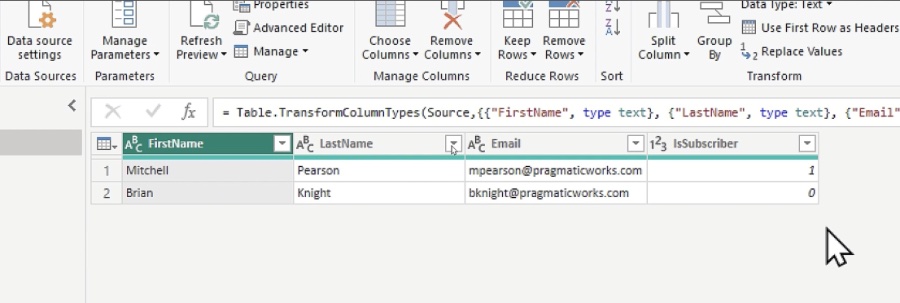- All of Microsoft
Enhance Data Analysis: Power Query Table Merging Guide
Unlock Excel & Power BI Potential: Master Merging Tables with Power Query Editor
Key insights
- Merging tables in Power Query enables you to effortlessly combine data from multiple sources, matching records on common columns and reshaping data.
- Mastering the 'Merge' function in Power Query can significantly save time, improve accuracy, and automate repetitive tasks in data analysis.
- Using different join types, you can append data, create new columns by pulling information from a related table, and perform lookups to enrich your primary table.
- Before merging, it's crucial to clean and harmonize data types and inconsistencies to ensure smooth processing and accurate results.
- Understanding the different join types ('inner', 'outer', 'left', and 'right') is essential for achieving the desired outcome in your data manipulation tasks.
Powerful Tool: Power Query Editor in Excel and Power BI
Power Query Editor is a fundamental tool in Excel and Power BI that empowers users to perform complex data transformations and cleansing processes efficiently. Its capability to merge tables facilitates the seamless integration of data from various sources, thereby optimizing the analysis and decision-making process. This functionality not only enhances productivity by saving valuable time but also ensures the accuracy and reliability of data analysis outcomes. As users become proficient in utilizing the 'Merge' function, they unlock the potential to automate their data manipulation workflows, making repetitive tasks straightforward and less prone to errors. Consequently, mastering Power Query Editor and its merging capabilities equips individuals with a powerful skill set that can be applied in a wide range of data analysis tasks, ultimately contributing to more informed and effective decision-making across various domains.

Merging Tables in Power Query Editor is an essential skill for those working in analytics, offering a hidden trick to combine data from various sources efficiently. This tool, available in Excel and Power BI, allows users to match records based on common columns or reshape data into new formats, enhancing the quality of analysis. It serves as a critical time-saving feature for data professionals.
Effortlessly combining data, the blog post discusses mastering merging tables in Power Query. It highlights the challenge of dealing with data from disparate sources when using Excel or Power BI. The 'Merge' function of the Power Query Editor simplifies the process, making it streamlined and efficient, particularly useful for those looking to pull information together.
Merging tables involves connecting two tables based on a shared column, enabling various operations such as appending data, creating new columns, or performing lookups. This functionality proves to be a boon for data professionals by eliminating the need for tedious manual lookups or complex VLOOKUP formulas. It ensures higher accuracy and allows for automation of the merging process for updated data with ease.
The blog post further elaborates on the benefits of merging tables within Power Query, emphasizing its role as a time-saver, its ability to reduce errors, and its automation capabilities. Clean data is underlined as a prerequisite for successful merging, alongside choosing the correct join type and understanding the necessity of disabling load for unneeded tables to enhance performance.
In conclusion, merging tables using Power Query offers a powerful way to transform and consolidate data, making workflows smoother for data professionals. The post encourages readers to explore online resources and tutorials for hands-on learning and improving their data manipulation skills. It suggests that embracing this function can elevate one's capabilities in handling complex data scenarios.
Exploring the Power of Efficient Data Compilation with Power Query
The advancement in data analytics tools like Power BI has revolutionized the way professionals work with data. Within this spectrum, Power Query stands out for its ability to bring together data from different sources into a cohesive dataset. This capability is instrumental for analysts and data scientists who often face the challenge of merging disparate data sets to derive meaningful insights.
Data compilation is not just about merging tables; it is about ensuring data integrity, maintaining accuracy, and optimizing the performance of data models. Power Query facilitates these aspects by providing features like different join types and the option to disable load for non-essential tables, thereby helping in creating efficient and streamlined data models.

People also ask
What is the difference between merge and append in Power Query?
Answer: In Power Query, when looking to expand your data set, you have two key methods: merging and appending. Merging allows you to add one or more columns from one query to another by specifying the common columns, enhancing your data's depth. Meanwhile, appending lets you add rows from one query to another, increasing the length of your data set.Can the Power Query Editor merge queries?
Answer: Yes, the Power Query Editor is designed not only for data transformation but also for combining data from different sources. It supports merging of queries, which involves creating a new query by joining two existing queries together. This process takes a primary table and a related table, thus establishing a join between them.How do I combine query tables?
Answer: To combine query tables effectively:How do I merge two tables in Power Query?
Answer: To achieve a single combined table, merge two connections.
Keywords
Merging Tables Power Query, Power Query Editor Tips, Power Query Tricks, Power BI Table Merge, Power Query M Language, Excel Power Query Merge, Data Transformation Power Query, Combine Tables Power Query
